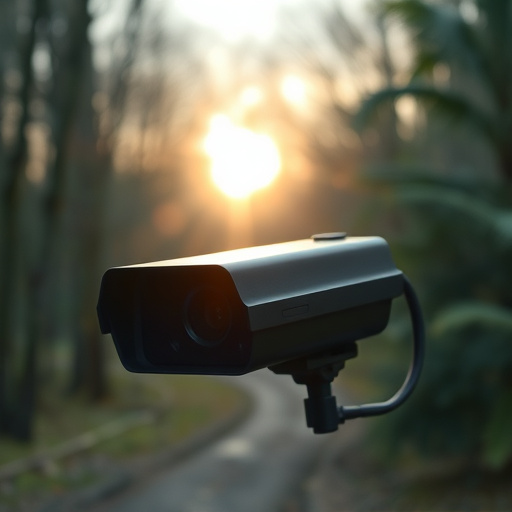Motion-activated spy camera battery life varies based on resolution, recording frequency, and sensor sensitivity. High-definition models have shorter durations, while lower-resolution or energy-saving alternatives last weeks to months. Advanced light reflection detection techniques analyze lighting changes to uncover hidden cameras, even low-battery models, extending overall battery life for reliable surveillance. Future innovations in spy camera detection focus on AI-driven motion sensors and enhanced light reflection analysis, promising accurate, discrete security solutions that protect privacy and public safety.
Uncover hidden eyes in your environment with our comprehensive guide on spy camera detection. From understanding the subtle signs of these invasive devices to exploring innovative light reflection techniques, this article equips you with essential knowledge. Learn how motion-activated spy camera detectors leverage advanced technology to mitigate privacy threats. Discover practical considerations for implementation and stay ahead of evolving trends, including the impact of battery life in these sophisticated security tools.
- Understanding Spy Cameras and Their Battery Life
- The Science Behind Light Reflection Detection
- Advantages of Motion-Activated Spy Camera Detectors
- Implementation and Practical Considerations
- Future Trends in Spy Camera Detection Technology
Understanding Spy Cameras and Their Battery Life
Spy cameras, also known as hidden cameras or surveillance devices, are small and discreetly designed to capture footage without detection. These cameras can be triggered by various mechanisms, one of the most common being motion activation. This feature ensures that the camera only records when there is movement in its field of view, conserving battery life and enhancing privacy protection.
The battery life of a motion-activated spy camera varies significantly depending on factors like resolution, recording frequency, and sensor sensitivity. High-definition cameras with advanced sensors may require more power, leading to shorter battery durations. Conversely, lower-resolution models or those with energy-saving modes can operate for extended periods, sometimes lasting weeks or even months on a single charge. Understanding these nuances is crucial when selecting a spy camera, especially in scenarios demanding minimal intervention and prolonged surveillance.
The Science Behind Light Reflection Detection
The Science Behind Light Reflection Detection involves a clever interplay of optics and technology. By utilizing light reflection, this method detects hidden spy cameras by analyzing changes in lighting conditions. When an object, like a motion-activated spy camera, enters a space, it reflects ambient light differently than its surroundings. This disruption in light patterns can be captured and processed to identify the presence of a camera, especially those with low battery life that might have reduced motion activation sensitivity. Advanced algorithms interpret these reflections, enabling users to uncover hidden devices, ensuring privacy protection, and highlighting the importance of maintaining optimal camera battery life for reliable operation.
Advantages of Motion-Activated Spy Camera Detectors
Motion-activated spy camera detectors offer several advantages over traditional methods of identifying hidden cameras, particularly in terms of spy camera battery life. One of the key benefits is their energy efficiency; these devices are designed to remain in a low-power state until they detect motion, significantly extending the lifespan of the batteries. This makes them ideal for long-term surveillance scenarios where consistent monitoring is required without frequent battery replacements or power cords.
Additionally, motion-activated detectors provide a more discreet approach, as they only come into play when necessary, minimizing false alarms and ensuring that users are alerted to potential issues in real-time. This precision enhances the overall effectiveness of spy camera detection, making it a preferred method for those seeking robust security solutions without compromising on privacy or convenience.
Implementation and Practical Considerations
The implementation of light reflection techniques for spy camera detection is a practical approach that leverages natural and artificial lighting to reveal hidden cameras. This method involves analyzing subtle changes in light patterns, such as reflections off surfaces or unusual distortions, to identify surveillance equipment. A key consideration is understanding the technology’s limitations; for instance, motion-activated spy cameras with long battery life might require more frequent checks due to their potential for prolonged operation without detection.
Practical considerations also encompass the environment in which the technique is applied. Illumination conditions play a significant role; optimal results are achieved when there’s ample lighting from various sources. Additionally, the detector’s position and angle must be carefully chosen to maximize reflection analysis. Regular maintenance and calibration of the detection system are essential to ensure accuracy, especially in dynamic settings where camera positions might change.
Future Trends in Spy Camera Detection Technology
The future of spy camera detection technology looks promising, with innovations focused on enhancing accuracy and convenience. One emerging trend is the integration of advanced motion sensors, such as those that use artificial intelligence to differentiate between human movement and other environmental factors. This ensures that devices are only activated when necessary, significantly improving battery life—a critical factor for portable spy camera detectors, given their reliance on constant power for optimal performance.
Additionally, developers are exploring the potential of light reflection analysis, leveraging advanced algorithms to detect even the subtlest changes in light patterns caused by hidden cameras. This technique, combined with motion activation, could lead to highly efficient and discrete security solutions. As technology advances, we can expect these innovations to become more accessible, offering better protection against surveillance threats, especially in the context of personal privacy and public safety.
In conclusion, the motion-activated spy camera detection technique using light reflection has emerged as a powerful tool to combat hidden surveillance. By understanding spy cameras’ battery life and leveraging scientific principles, this technology offers significant advantages in privacy protection. As we move forward, advancements in sensor capabilities and data analytics will further enhance its effectiveness, ensuring folks remain secure in their personal spaces. The future of spy camera detection lies in seamless integration and improved accuracy, making it a game-changer in maintaining privacy in today’s digital era.
